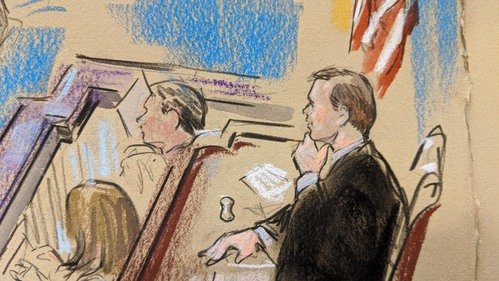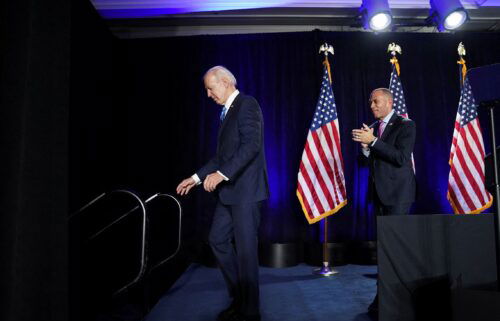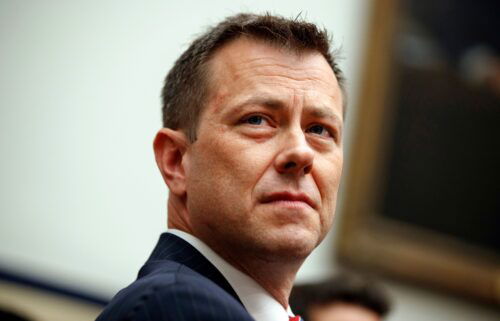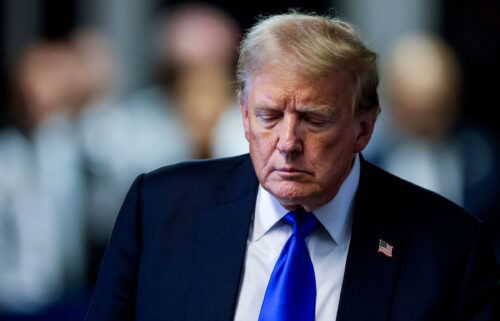John Roberts will not be silent Wednesday. But the questions he asks will not be his.

Since the Senate impeachment trial began last week, Chief Justice John Roberts has been mainly out of the camera’s line of sight. He has, clerk-like, enforced Senate procedures and kept the clock for the lawyers at the lectern. He has tried to maintain the chamber’s decorum, as when he admonished the legal teams against nastiness, citing a 1905 Senate trial precedent against use of the word “pettifogging.”
He has introduced some levity, as when Senate Majority Leader Mitch McConnell wished him happy birthday on Monday and the 65-year-old Roberts responded with: “Well, thank you very much for those kind wishes, and thank you to all the senators for not asking for the yeas and nays.”
Beginning Wednesday, Roberts will be less lighthearted and far more visible. He will be the voice of senators, with his visage at the center of the screen as he reads their questions. Roberts will pose questions that the senators write on forms to the US House managers and President Donald Trump’s lawyers.
If he follows the model of Chief Justice William Rehnquist in the 1999 trial of President Bill Clinton, Roberts will state the questions with as little inflection and emotion as possible, reading verbatim from the forms. At the start of each query, Roberts is expected — per tradition — to announce which senator has put forward the question.
Yet it could get awkward, as the chief justice of the United States may be pressed to ask questions — based on some of the assertions already made in the chamber — related to Trump as “a cheat … who got caught” or, alternatively, to Hunter Biden, son of former Vice President Joe Biden, who has been targeted by Trump’s defense team.
Since Roberts and the 100 senators took their oaths for the trial, he has sat, wearing his customary black robe, at a large desk above the rows of senators’ desks. As he has listened to the legal teams at the lectern make their cases, Roberts has leaned back, hands folded, occasionally putting a finger up to his temple. In front of him are a binder, loose sheets of paper and the little nub of a gavel he raps when it is time to declare a break.
That silent posture represents a departure from his position at the Supreme Court, where, as he listens to a lawyer at the lectern, he regularly interjects with questions. But there, as distinct from his Senate role, he has a crucial vote and decides cases.
RELATED: Why John Roberts admonished the impeachment legal teams at 1 a.m.
Senate Republican and Democratic leaders will organize the questions to be asked from their members. The standard question form includes lines for the senator’s name and to whom the question should be directed (House managers or President’s counsel).
Groups of senators may band together, as happened in 1999.
In one instance, Rehnquist announced: “This is a question from Sens. (Mike) DeWine, (Susan) Collins and (Frank) Murkowski to the House managers. With all of the conflicting testimony that exists on the record between Monica Lewinsky and Betty Currie, for example, how are we to resolve the questions of perjury and obstruction of justice without observing the demeanor of witnesses?” Lewinsky was the former White House intern with whom Clinton had had a sexual liaison; Currie was his personal secretary.
US Rep. Asa Hutchinson, one of the trial managers, responded at length about the importance of hearing directly from witnesses, beginning with, “I don’t think there is any way to resolve the conflicts in their testimony without calling the witnesses.”
Whatever thoughts Rehnquist had, he kept to himself. But, as Roberts observed on Tuesday, Rehnquist, who died in 2005 and was his immediate predecessor as chief justice, had sought succinct questions and answers.
Rehnquist told lawyers on both sides that he would “operate on a rebuttable presumption that each question can be fully and fairly answered in five minutes or less.” Roberts noted that the 1999 transcript showed that the statement was met with “laughter.”
“Nonetheless,” Roberts concluded on Tuesday, “managers and counsel generally limited their responses accordingly. I think the late chief’s time limit was a good one and would ask both sides to abide by it.”
Then, it gets really thorny
When the two-day round of questions is finished, the senators — and perhaps Roberts — will confront more difficult issues related to witnesses.
Senators have not resolved whether to call witnesses who may have knowledge of Trump’s dealings with Ukraine, such as former national security adviser John Bolton. That dilemma has only become more fraught as The New York Times revealed this week that Bolton, according to the newspaper’s sources, has recounted in a draft book manuscript that Trump told him he wanted to withhold military aid to Ukraine until the country investigated former Vice President Joe Biden, a Democratic rival of Trump.
Based on Senate trial precedent, as well as Roberts’ cautious and reserved approach, he is unlikely to take any determinative role in disputes over witnesses or any matter that would seriously influence Trump’s ultimate fate — or jeopardize his own reputation as a jurist and chief justice of the United States.
But Roberts could face entreaties to enlarge his role. Some senators and House managers, as well as political commentators, have been debating outside the chamber the extent of Roberts’ duties and whether he might even break a tie if senators split 50-50 on witnesses.
RELATED: Chief Justice John Roberts says Americans may ‘take democracy for granted’
The Senate rules give the chief justice specific duties as a presiding officer, adhering to the Constitution’s dictate that the “sole power” to try a president rests with the Senate.
In 1999, Rehnquist saw his role as limited, famously taking a page from Gilbert and Sullivan’s “Iolanthe” and remarking that he “did nothing in particular, and did it very well.” In the only other presidential impeachment trial, that of President Andrew Johnson in 1868, Chief Justice Salmon Chase broke tie votes twice, but those moves and his political stance throughout that trial remain controversial today.
The voting power of the presiding officer has not been tested in modern times. But many scholars of impeachment believe Roberts would not be able to break a tie, and a recent Congressional Research Service report observed, “The Chief Justice, when presiding over an impeachment trial, would not be expected to vote, even in the case of a tie. If a vote on a question results in a tie, the question is decided in the negative.”
When the vice president presides over the Senate, he is able to break a tie vote. That power is delineated in the Constitution.



